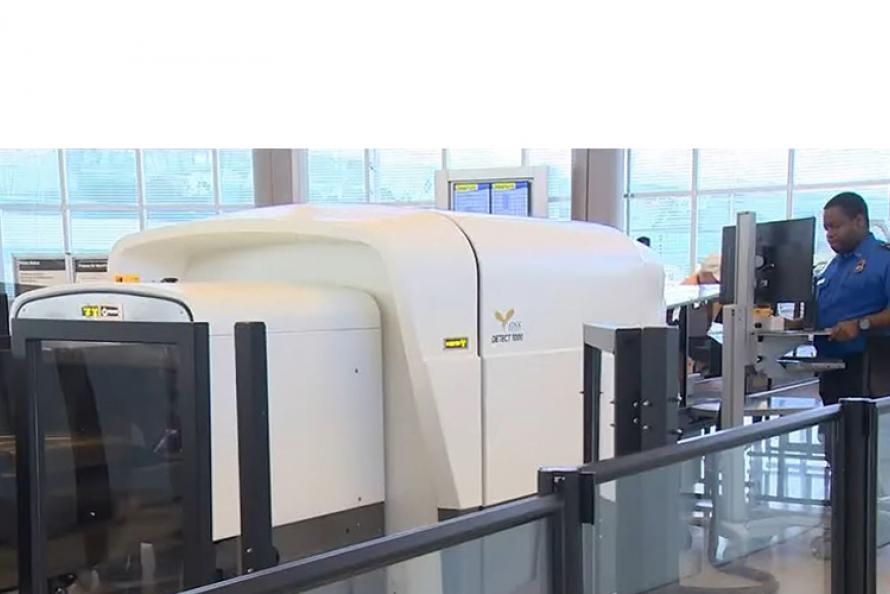The Transportation Security Administration (TSA) recently unveiled a state-of-the-art advanced technology computed tomography (CT) checkpoint scanner for screening passengers and their belongings at the security checkpoint at William P. Hobby Airport (HOU). The unit, which provides 3-D imaging that enhances explosives detection capabilities, is being tested in one lane at the checkpoint.
CT is the latest checkpoint X-ray scanning equipment to enhance threat detection capabilities for carry-on baggage as TSA continues to raise the baseline for aviation security. The technology is similar to CT technology used in the medical field. Like existing CT technology used for checked baggage, the machines create such a clear picture of a bag’s contents that computers can automatically detect explosives, including liquids.
TSA’s current screening technology for carry-on bags uses 2-D images. The CT technology applies sophisticated algorithms for the detection of explosives and other threats by creating a 3-D image that can be viewed and rotated 360 degrees for a thorough analysis by TSA officers. If a bag requires further screening, TSA officers will inspect it to ensure that a threat item is not contained inside.
“TSA here at Houston Hobby is honored to be among the first airports in the country to test this checkpoint technology,” said Hector Vela, TSA Houston federal security director. “CT significantly improves our threat detection capabilities, and passengers in the lane where we are testing CT have the added benefit of being able to leave their laptops and larger electronics in their bags as well.” In the future, the goal is to keep laptops and 3-1-1 liquids inside of the bag during checkpoint screening.
TSA has used CT units for scanning checked bags for any years, but this marks its first use at passenger screening checkpoints. The smaller-sized equipment shoots hundreds of images with an X-ray camera spinning around the conveyor belt to provide TSA officers with the three-dimensional views of the contents of a carry-on bag.
“Partnerships are vital in providing the kind of customer service our passengers deserve,” said HOU General Manager Liliana Rambo. “Our strong partnership with TSA is one of the reasons Hobby Airport was chosen to help pilot this important program, and another example of how the Houston Airport System embraces technology in an effort to both provide world-class customer service while ensuring the safety of the growing number of passengers choosing Hobby Airport as the gateway to their travel experience.”
TSA plans to have up to 40 units in place at airports around the nation by the end of the year, along with 16 units at federal testing facilities. More than 145 will be in airports by the end of fiscal year 2019.
HOU is one of 15 airports initially testing the equipment. The equipment at HOU is manufactured by IDSS.
